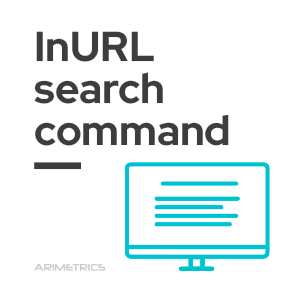 Definition:
Definition:
The inURL command is an advanced Google search tool designed to filter results in SERPs (search engine results pages) based on keywords contained in URLs. By using this command, documents can be retrieved where keywords appear anywhere in the URL, making it easier to locate relevant content. This command is especially useful for searching for pages with a regular structure, such as help pages or specific sections of a website. In addition, the inURL command can be combined with other search operators to obtain more specific and precise results.
Example of inURL Usage
If you want to search for pages on“www.arimetrics.com” that have “glossary” in the URL, you could use:
site:www.arimetrics.com inurl:glossaryFunctions of the inURL search command
- It allows you to display results for URLs containing one or more specified keywords, helping you to find pages that deal with specific topics or belong to certain categories.
- Restrict the results to URLs that include only the desired keywords, excluding other pages that are not relevant.
- It can be combined with other Google search operators, such as “site:” or “intitle:”, to further refine the results and obtain more specific information.
Advantages and disadvantages of the inURL search command
Advantages:
- It allows you to obtain accurate search results, improving search efficiency.
- Facilitates competitor analysis by identifying relevant pages.
- It is beneficial for SEO, as it helps to identify and optimize the structure of URLs.
Disadvantages:
- The search is limited to specific sites or pages, which may exclude potentially relevant content.
- It does not incorporate other types of content that might be of interest to the user.
Benefits of using the inURL search command on a web page
The use of the inURL command is advantageous for examining your own projects, as it allows you to identify relevant keywords within the URL structure. This is especially useful for SEO, as it helps to verify whether web content has been indexed correctly and to take corrective action if necessary. In addition, it facilitates the identification of indexing errors and opportunities for improvement in URL structure and content.
